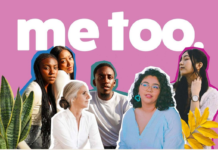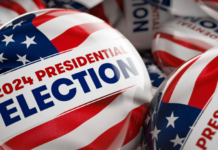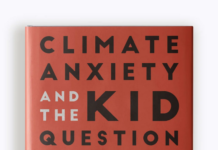By Nadra Nittle
Originally published by The 19th, your trusted source for contextualizing the news. Sign up for our daily newsletter.
Weeks after the Supreme Court blocked President Joe Biden’s student debt forgiveness plan in June, many borrowers on Friday received some welcome news about loan relief: The Department of Education announced that it will discharge $39 billion in federal student debt for about 804,000 people.
The debt will be canceled through the income-driven repayment (IDR) plans designed to keep monthly loan amounts manageable for borrowers based on income and family size. The Biden administration announced in April 2022 that it would be making adjustments to ensure that borrowers under these plans have an updated count of their monthly payments that qualify toward forgiveness. Under such plans, borrowers are eligible for forgiveness if they made 240 or 300 monthly payments, which is the equivalent of 20 or 25 years on an IDR or standard repayment plan. Previously, the federal government did not accurately account for such payments, delaying the progress borrowers had made toward loan forgiveness.
“For far too long, borrowers fell through the cracks of a broken system that failed to keep accurate track of their progress towards forgiveness,” Education Secretary Miguel Cardona explained in a statement. “Today, the Biden-Harris Administration is taking another historic step to right these wrongs. … By fixing past administrative failures, we are ensuring everyone gets the forgiveness they deserve.”
The discharging of debt will also prioritize borrowers improperly put into forbearance by loan servicers.
“At the start of this administration, millions of borrowers had earned loan forgiveness but never received it. That’s unacceptable,” Under Secretary of Education James Kvaal said in a statement. “Today we are holding up the bargain we offered borrowers who have completed decades of repayment.”
Nationally, the amount of federal and private student loan debt totals more than $1.7 trillion, which forgiveness supporters call a “crisis.” Overrepresented on college campuses, women hold two-thirds of loan debt, which many struggle to pay off due to an ongoing gender pay gap and other systemic issues.
Beginning Friday, the Department of Education will notify borrowers eligible for debt discharges. These individuals include people with direct loans or federal family education loans who have reached the forgiveness threshold. Eligible borrowers do not need to take any additional steps and will have their debt discharged about a month after receiving an email notification. In the meantime, repayments on their loans will be paused.
Persis Yu, deputy executive director and managing counsel at the Student Borrower Protection Center, which advocates for debt relief, called the debt discharges “a huge victory” for the “borrowers who have been trapped in decades of never-ending payments.” Yu applauded the administration for its advocacy for borrowers but also criticized the student loan system as “cruel” and “broken.”
“But make no mistake — over 804,000 people are receiving relief with this action because of 804,000 failures — and this is only the tip of the iceberg,” she said in a statement. “Working people with student loan debt have been made collateral damage by a dysfunctional student loan system. … Our student loan system is riddled with structural incompetence, and vulnerable, low-income and Black and Brown borrowers face the harshest effects.”
Although the Supreme Court recently blocked the Biden-Harris administration’s forgiveness plan to broadly cancel up to $20,000 in student debt for individuals earning under $125,000 annually, the administration had already approved more than $116.6 billion in relief for over 3.4 million borrowers during its tenure in the White House.
This includes $45 billion for 653,800 public servants, $5 billion for 491,000 borrowers with permanent disabilities and $22 billion for about 1.3 million borrowers who attended predatory for-profit colleges and other troubled academic institutions.
After the Supreme Court ruling, the Department of Education finalized its Saving on a Valuable Education SAVE plan, which it expects to dramatically reduce undergraduate loan payments, keep balances steady and allow borrowers to reserve more of their income to pay for basic necessities. Benefits from the SAVE plan will be available to borrowers this summer.
“We look forward to the administration’s ongoing efforts to enact further relief efforts and ensure they include defaulted borrowers — those who have truly fallen between the cracks and who have been continually left behind,” Yu said.
Image Credit: Rochelle Nicole/Unsplash






































